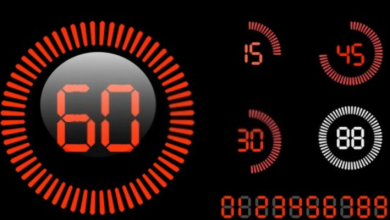What are the ways to make PoE deployments more efficient?

PoE devices can adapt to changing conditions. They can be relocated, reconnected at the switch level, and seamlessly integrated with changing network configurations. Power over Ethernet can be used as a plug-and-play. The entire network must not be rearranged to add or remove devices.
What makes Power over Ethernet installation more secure?
PoE Type 3 voltages are generally less than 60V, and Type 4 is not more than 90V. Conduits and metal claddings are not necessary. Fewer steps, fewer risks, and the easy usage of an Ethernet cable will eliminate the need to hire a licensed electrician.
What are PoE’s capabilities to collect data?
PoE technology is ideal for collecting data. For instance, analytics software can assist the facilities department in identifying when an area is used and when the HVAC and LED PoE lighting are turned off. This means that the operational cost can be less based on the actual use.
How can PoE improve productivity?
With the help of two-way data, LED lighting control systems can be programmed to operate according to the spectrum of frequencies and frequencies used in nature. This means that employees will experience better well-being, alertness, creativity, collaboration opportunities, and an overall sense of well-being when on the job.
What are the limits of Power over Ethernet?
There are a few limitations. However, they must be considered when adopting the program for the first time
- It’s simple. PoE can only send 100 meters.
- Non-compliant devices require additional equipment.
- Power budgets can only reach the levels that are available to legacy equipment.
Let’s examine these three limitations more carefully.
What is the longest distance for PoE?
PoE can transmit 100m from the hub or switch towards the Network interface Controller (NIC) regardless of where power is introduced. The issue is not the power, but rather the Ethernet standard for cabling limits the total length of the cabling to 100m, which is the maximum distance that a Power over Ethernet switch can transmit data via Ethernet. However, a PoE Ethernet extender can extend up to 4,500 feet. Extenders permit centralized control over an extensive area of networks that cover campuses, businesses, and large retail establishments such as shopping malls.
What does device compatibility mean?
The older devices (those which aren’t PoE compatible) require an injector or splitter. PoE provides power and data through one cable and, therefore, one input. Older devices receive power and data independently.
Here’s how they function:
- PoE injector: Delivers energy to PoE equipment which receives data from an existing switch that is not PoE
- PoE splitter also supplies electricity, but it does so by separating the power of the data and feeding it into an additional input device that devices that are not PoE compliant could utilize
What is the power capacity that can be delivered via a port?
When buying, administrators need to ensure that the switch’s power budget is adequate to support the devices it is compatible with. Find the power specification/budget of the manufacturer for each port to determine which device will be able to receive the power it needs via the switch.
What is a PoE power budget?
The power budget represents the amount of power a device can transmit through an Ethernet cable.
What energy can PoE devices provide?
PoE devices provide power by the device’s specifications of IEEE 802.3 standards generation. The life-cycle generation can be identified by the extension “af”, “at” (PoE+),or “bt” (PoE++ or UPoE). The chart below provides an unbiased comparison of each PoE Type’s power maximum at the port level.
Allotting Sufficient PoE Power to Your Network
PSEs (such as hubs and switches) have a total PoE budget. However, PDs (such as IP and VoIP cameras) are equipped with different power requirements, and the amount must be lower than the PSEs total point budget.
What are the cables and Power over Ethernet?
Every PD has access to the network’s information using an Ethernet cable. Before PoE technology entered the scene, with an Ethernet cable, every device also needed an individual power cord. Since the number of gadgets started increasing and cables were being tangled, managing them was complicated and time-consuming. The solution to this mess was combining power and data transmission through one Cat5 Ethernet cable. Ethernet cables are divided into Cat5 (nearly outdated), Cat5e, Cat6, Cat6a, Cat7, and Cat8, each offering excellent noise and signal interference protection rates and signal interference protection, respectively. The PSEs that support these PDs are not changing but are different. They’re either PoE switches or Power over Ethernet injectors. Deciding the best option to use is essential to save time and cost. It is evident that determining which one isn’t difficult once you know the distinctive features of both.
What is the most suitable equipment for your PoE network?
There is a variety of PoE equipment for various networking environments. Industrial Power over Ethernet, for instance, is designed to stand up to the extreme temperatures typical of harsh industrial settings. Outdoor PoE equipment typically comes protected in an encasement to guard against the weather. Additionally, network administrators should ensure that their PSEs allocate enough PoE power budget to accommodate the amount they want from PDs.
PoE Switches
The PoE switch is an Ethernet switch that can offer Power over Ethernet from each interface and still be capable of forwarding frames. Unmanaged and managed PoE switches are accessible. The PoE switch requires an Uplink connected to an existing network to extend and expand ports.
What a PoE Switch Offers
A network switch for IT is an electronic device for multiport networks that connect computers and smart devices, allowing them to transfer and receive information. The PSE allows the transfer of files between MAC addresses through the layer of data links. When a PoE switch (or injector in this case) connects to a device, it automatically determines if that equipment has been identified as PoE compatible and requires power. If you make sure that any newly installed switches you purchase are PoE switches, you will be able to make sure that all PoE devices you require will be able to join your existing network quickly.
Also, you can ensure that you can connect to other devices as they can support both without fear of harm. Automatic step-down features allow every device to recognize a PDA’s presence and decide if it is receiving data or power. This IEEE Power over Ethernet protocol also enables the PoE device to change (or injector) to identify the level of power it has to provide. The delivery method and quantity of power required by each device are automatically determined. However, you can identify the necessary power using the IEEE 802.3 extension. For instance, an type 1 gadget (IEEE 802.3af) can take a maximum of 15.4W or DC power. A Type-type device (IEEE 802.3at) will accept up to 30W.
Which Versa switches can be PoE-capable?
The Versa switches, which are PoE compatible, can be located on the Power over EthernetSwitch page. There are informative acronyms engraved on the chassis that are external to every switch. The following are the acronyms and their meanings:
DMS: device management systems
UPDATE: Ultra Power Over Ethernet
Gbe: Gigabit Ethernet
PoE is the term used to describe power over Ethernet.
To maintain the network, companies have to evaluate their needs for network connectivity to determine the best option between managed and controlled PoE switches. The unmanaged PoE switches are relatively inexpensive with their fixed setup making it simple to set up the plug-and-play device. But that’s not to suggest that unmanaged PoE switches aren’t equipped with additional hardware features. For instance, unmanaged PoE switches could provide a backup power supply, higher operating temperatures, and nearly non-noisy operation, in addition to other features on the hardware.
Many administrators with more significant network requirements choose to use monitored PoE switches. They are often equipped with port mirroring. Using an analyzer for protocols, they can also track incoming traffic flow ofincoming traffic, thereby facilitating troubleshooting. Managed Power over Ethernet switches also permit network administrators to track and prioritize the traffic flow, establish VLANs and then program them using interfaces like Telnet, SNMP, or console. If you’re looking to upgrade your network, go to our website to see a complete selection of PoE switches, gigabit switches, managed Ethernet switches, and certified industrial switches.
PoE Injectors
Power over Ethernet injectors are devices that operate mid-span, usually used between a PoE-capable switch and a PoE-capable PD (such as an IP camera). Power over Ethernet injectors provide (or add) power into the network cable to ensure that a PD can be powered and function without the need for a DC power source. In other words, a PoE-injector allows an un-PoE PSE to be compatible with a PoE-capable PD. So, when paying the money to purchase the switch isn’t practical, PoE-injectors provide an alternative when fewer PoE-ports are needed.
For more informational articles visit ezpostings.





